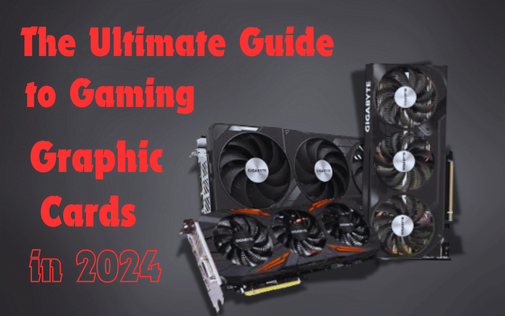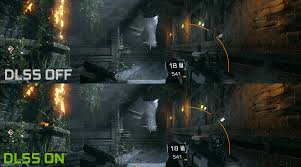A graphic card, or GPU (Graphics Processing Unit), is the cornerstone of any serious gaming setup. It’s the key component responsible for rendering images, videos, and animations in games, providing the performance and visual fidelity that gamers crave. With rapid advancements in game graphics and technology, understanding the importance of graphic cards and how to choose the right one is essential. This article will delve into the role of graphic cards in gaming, factors to consider when selecting one, and the future trends shaping the industry.
The Role of Graphic Cards
Performance and Frame Rates
The performance of a graphic card directly impacts the frame rate (frames per second or FPS) that a game can achieve. Higher frame rates lead to smoother gameplay and a more responsive experience. For competitive gamers, a high FPS can mean the difference between winning and losing, as it reduces input lag and enhances reaction times.
Visual Quality
Modern graphic cards enable games to run at higher resolutions and with more detailed graphics. Features such as anti-aliasing, texture filtering, and high dynamic range (HDR) contribute to stunning visuals. Additionally, technologies like ray tracing, which simulates realistic lighting and shadows, elevate the visual experience to new heights. NVIDIA’s RTX series and AMD’s Radeon RX 6000 series are prime examples of graphic cards that support these advanced features.
VR and AR Gaming
Virtual Reality (VR) and Augmented Reality (AR) gaming demand significant graphical processing power to maintain high frame rates and low latency, essential for an immersive experience. Powerful graphic cards ensure that VR and AR applications run smoothly, providing a seamless and engaging experience.
Future-Proofing

Investing in a high-quality graphic card can future-proof your gaming setup. As games evolve and become more demanding, a robust graphic card ensures that your system can handle new titles without the need for frequent upgrades.
Choosing the Right Graphic Card
Performance Needs
Evaluate your gaming habits and the types of games you play. High-end AAA titles with demanding graphics require powerful graphic cards like the NVIDIA RTX 3080 or AMD Radeon RX 6800 XT. For less demanding games or esports titles, mid-range cards such as the NVIDIA GTX 1660 Super or AMD RX 5600 XT may suffice.
Resolution and Refresh Rate
The resolution of your monitor and its refresh rate significantly impact your graphic card choice. Higher resolutions (1440p, 4K) and higher refresh rates (144Hz, 240Hz) demand more powerful graphic cards to maintain high frame rates. Ensure your chosen graphic card can support your monitor’s specifications to avoid bottlenecks.
Ray Tracing and DLSS
Consider whether you want the latest graphical enhancements like ray tracing and Deep Learning Super Sampling (DLSS). Ray tracing offers realistic lighting and shadows, while DLSS uses AI to upscale lower-resolution images, providing higher performance without compromising visual quality. These technologies, primarily available in NVIDIA’s RTX series, can significantly enhance your gaming experience.
Budget
Graphic cards vary widely in price. It’s important to balance performance needs with your budget. High-end graphic cards offer the best performance but come at a premium. There are also many budget-friendly options that provide excellent performance for less demanding gaming needs.
Compatibility
Ensure the graphic card is compatible with your current system. Check your power supply, available PCIe slots, and physical space in your case. Upgrading your graphic card might also require upgrading other components like your power supply unit (PSU) or even your motherboard.
Future Trends in Graphic Cards
Increased Focus on Ray Tracing
Ray tracing is becoming more mainstream, with more games supporting this technology. Future graphic cards will likely continue to enhance ray tracing performance and efficiency, making it a standard feature in gaming.
AI and Machine Learning
Graphic cards are increasingly leveraging AI and machine learning to improve gaming experiences. Technologies like DLSS use AI to upscale lower-resolution images, offering higher performance without sacrificing visual quality. Expect future graphic cards to integrate even more AI-driven enhancements.
Power Efficiency
Manufacturers are continuously working to improve the power efficiency of graphic cards, reducing heat output and power consumption while maintaining or increasing performance. This trend is crucial for creating more sustainable and eco-friendly gaming systems.
Integration with Cloud Gaming
As cloud gaming grows in popularity, graphic cards will play a critical role in data centers, providing the necessary power to stream high-quality games to users with minimal latency. This shift could make high-end gaming more accessible to a broader audience.
Advancements in VR and AR
Future graphic cards will push the boundaries of VR and AR, providing even more immersive and realistic experiences. As VR and AR technologies evolve, so too will the graphic cards that power them, ensuring smooth and engaging gameplay
Conclusion
A graphic card is a pivotal component in delivering an optimal gaming experience. It enables high performance, stunning visuals, and the latest graphical technologies, making it essential for any gaming enthusiast. By understanding your needs and keeping an eye on future trends, you can make an informed decision when selecting a graphic card, ensuring that your gaming setup remains powerful and future-proof.


